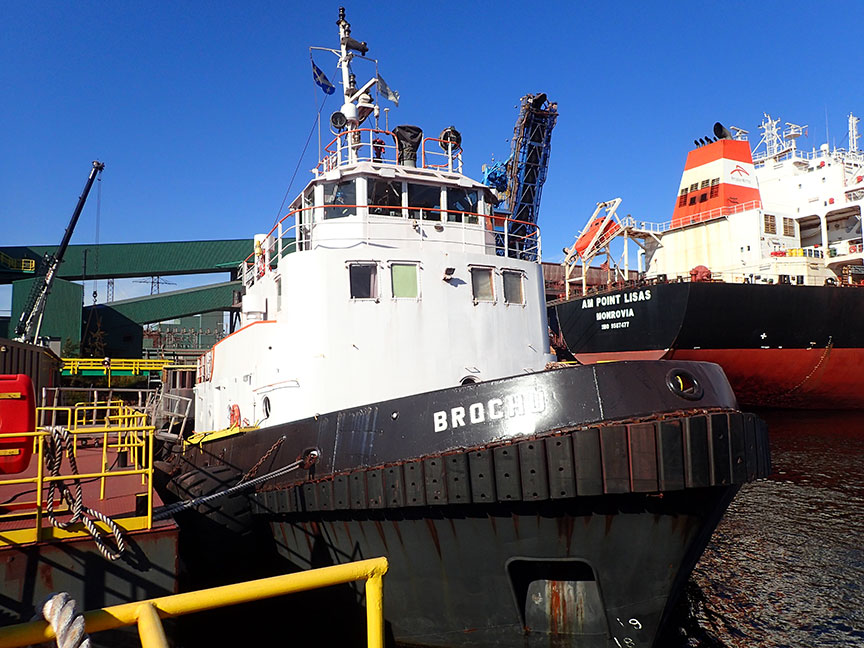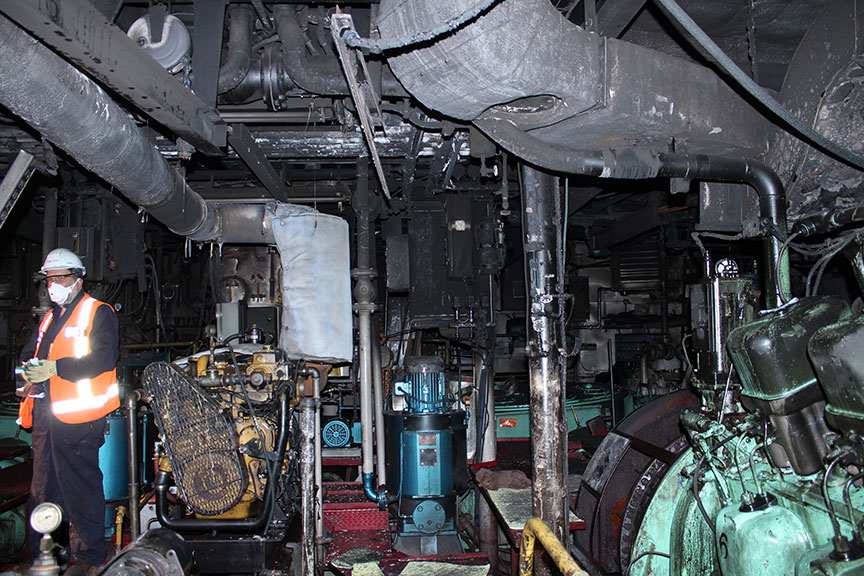Mechanical failure and subsequent fire
Tug Brochu
Port-Cartier, Quebec
The occurrence
On , the harbour tug Brochu, operating in Port-Cartier, Quebec, with 3 people on board, sustained a mechanical failure, leading to a fire in the engine room. The tug's hydrodynamic fluid coupling linking one of its propellers to the starboard engine overheated, which caused hot oil to leak and ignite in the machinery compartment. Using its port engine, the tug returned to berth, where the crew assisted by fire fighters extinguished the fire. No injuries or pollution were reported, but the fire caused extensive damage to the tug.
Safety communications
Marine Safety Advisory Letter no. 04/17 - Overheating of hydrodynamic fluid coupling and subsequent fire
Also shared on the Marine Accident Investigators' International Forum (MAIIF) website
Media materials
News release
Investigation report: Mechanical failure and fire on board the Brochu in Port-Cartier, Quebec, in September 2017
Read the news release
Deployment notice
TSB deploys a team of investigators to Port-Cartier, Quebec following marine incident that occurred on 15 September 2017
Québec, Quebec, 19 September 2017 — The Transportation Safety Board of Canada (TSB) is deploying a team of investigators to Port-Cartier, Quebec, following a mechanical failure followed by a fire in the engine room onboard the tugboat Brochu that occurred on 15 September 2017. The TSB will gather information and assess the occurrence.
Investigation information
Download high-resolution photos from the TSB Flickr page.
Class of investigation
This is a class 4 investigation. These investigations are limited in scope, and while the final reports may contain limited analysis, they do not contain findings or recommendations. Class 4 investigations are generally completed within 220 days. For more information, see the Policy on Occurrence Classification.
TSB investigation process
There are 3 phases to a TSB investigation
- Field phase: a team of investigators examines the occurrence site and wreckage, interviews witnesses and collects pertinent information.
- Examination and analysis phase: the TSB reviews pertinent records, tests components of the wreckage in the lab, determines the sequence of events and identifies safety deficiencies. When safety deficiencies are suspected or confirmed, the TSB advises the appropriate authority without waiting until publication of the final report.
- Report phase: a confidential draft report is approved by the Board and sent to persons and corporations who are directly concerned by the report. They then have the opportunity to dispute or correct information they believe to be incorrect. The Board considers all representations before approving the final report, which is subsequently released to the public.
For more information, see our Investigation process page.
The TSB is an independent agency that investigates air, marine, pipeline, and rail transportation occurrences. Its sole aim is the advancement of transportation safety. It is not the function of the Board to assign fault or determine civil or criminal liability.

